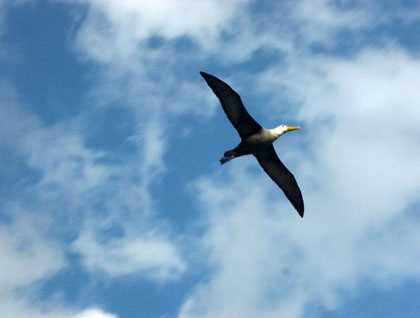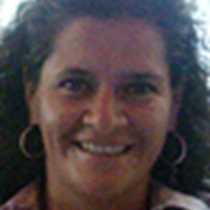Española, also known as Hood Island, is the oldest island in the Galapagos. At an estimated 4 million years of age, this island has given species more time to evolve in isolation. If you compare its age to the age of the planet itself, which is 6.4 billion years, we can understand how important this site has been to the study of biology and the development of species.
As we started to walk among the lava, we could see that erosion had converted the lava flows into boulders. At about the middle of this trail, we found the nesting grounds of the waved albatross, and we were lucky enough to see the first pair of males circling the landing area and eventually landing just in front of us—what an incredible encounter! The albatross is an oceanic bird that spends most of its life in flight, only coming to land to reproduce. They have chosen this particular island to nest because of its cliffs, from where they can easily take off.
Another interesting inhabitant of the place is the Española mockingbird. There are four species of mockingbird found in the Galapagos, and this is the second species that we have encountered this week, so far. They were the only species that Darwin was able to recognize back in 1835. He collected three of them, and he was able to see the physical differences between them, leading him to the conclusion that “there is a difference between the inhabitants of the different islands”.
As we continued to hike along the trail, we found the Nazca Boobies, engaging in many different life cycle behaviors: couples courting, couples making a nest, couples preening each other, parents feeding chicks and independent chicks defying hawks, knowing that they are now too big to be preyed upon.
Española is one of the jewels of the crown, as we say, and as we returned to the ship at sunset time, we reflected on this amazing place, where animal species have made their homes for millions of years. We understand how fragile these islands have become, and how important it is to protect them, for ourselves and for the animals that live here.







